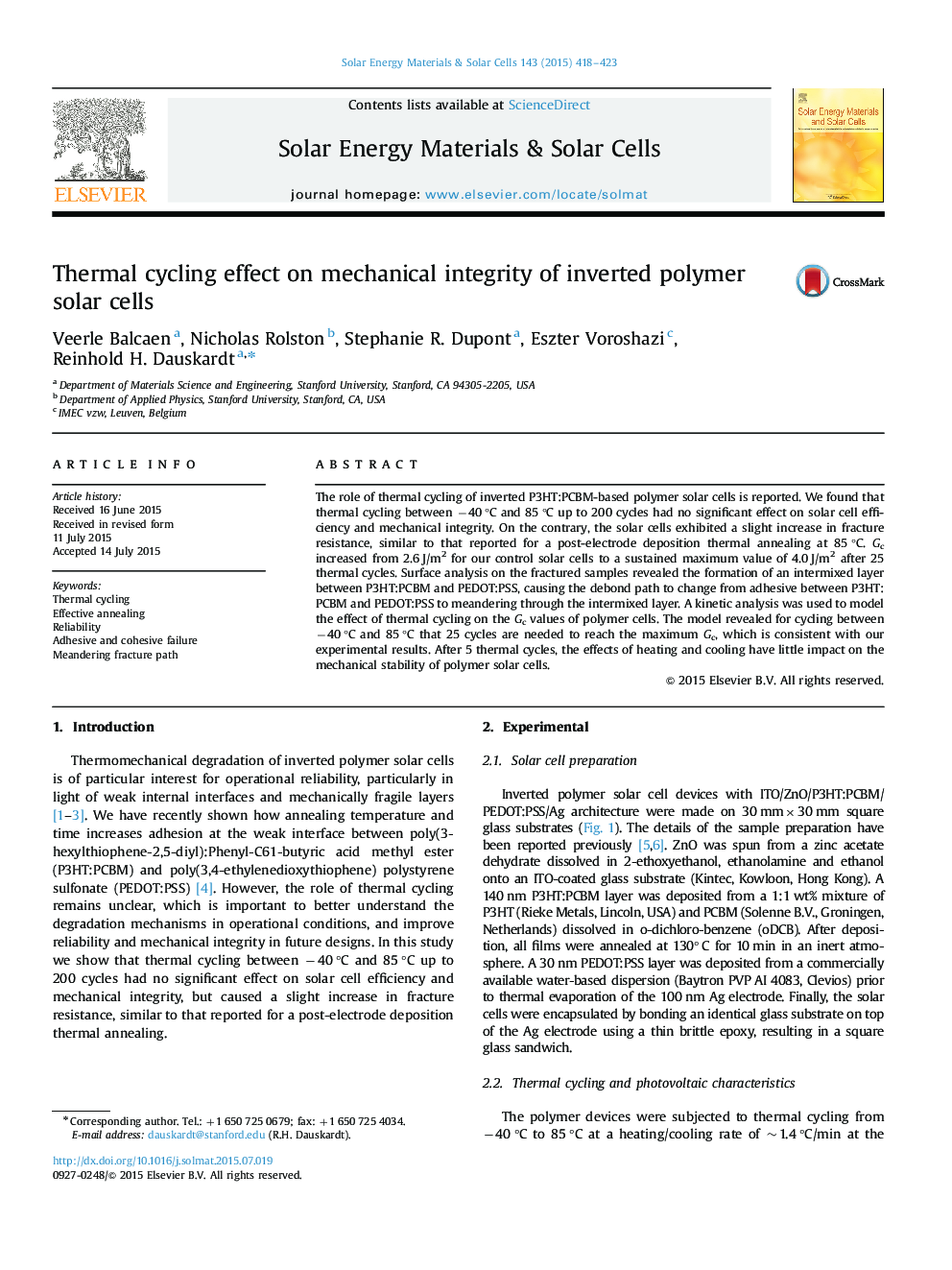| Article ID | Journal | Published Year | Pages | File Type |
|---|---|---|---|---|
| 6535090 | Solar Energy Materials and Solar Cells | 2015 | 6 Pages |
Abstract
The role of thermal cycling of inverted P3HT:PCBM-based polymer solar cells is reported. We found that thermal cycling between â40 °C and 85 °C up to 200 cycles had no significant effect on solar cell efficiency and mechanical integrity. On the contrary, the solar cells exhibited a slight increase in fracture resistance, similar to that reported for a post-electrode deposition thermal annealing at 85 °C. Gc increased from 2.6 J/m2 for our control solar cells to a sustained maximum value of 4.0 J/m2 after 25 thermal cycles. Surface analysis on the fractured samples revealed the formation of an intermixed layer between P3HT:PCBM and PEDOT:PSS, causing the debond path to change from adhesive between P3HT:PCBM and PEDOT:PSS to meandering through the intermixed layer. A kinetic analysis was used to model the effect of thermal cycling on the Gc values of polymer cells. The model revealed for cycling between â40 °C and 85 °C that 25 cycles are needed to reach the maximum Gc, which is consistent with our experimental results. After 5 thermal cycles, the effects of heating and cooling have little impact on the mechanical stability of polymer solar cells.
Keywords
Related Topics
Physical Sciences and Engineering
Chemical Engineering
Catalysis
Authors
Veerle Balcaen, Nicholas Rolston, Stephanie R. Dupont, Eszter Voroshazi, Reinhold H. Dauskardt,
